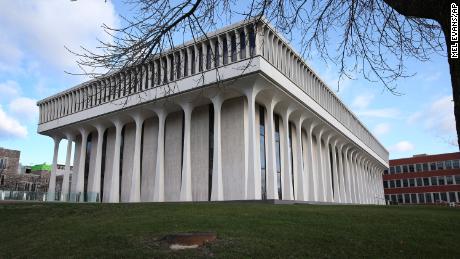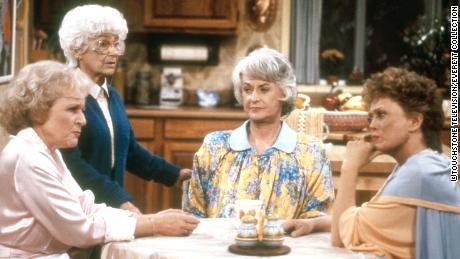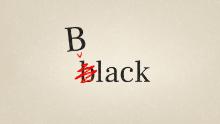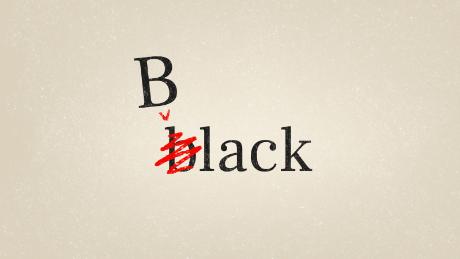The problem with the ‘Hamilton’ movie – CNN
[ad_1]


But clearly it has landed in a different landscape from 2015, when “Hamilton” premiered on Broadway. What Lauren Michele Jackson, writing in the New Yorker, calls the “righteous, multicultural patriotism” of the play seems now at odds with Black Lives Matter’s strident call for radical change to an America where the legacy of white supremacy lives on. In addition to demanding an end to anti-Black violence from police, many protesters have focused on removing or toppling various statues and monuments of Confederate leaders, as well as Andrew Jackson, Teddy Roosevelt, Christopher Columbus and even one of Abraham Lincoln, because of their symbolism.
Some eyebrows were raised when “Hamilton’s” creator and lead actor, Lin-Manuel Miranda, and its producer, Jeffrey Seller, admitted in late May that they were guilty of the “moral failure” of not speaking up about the George Floyd protests. Last week, in a profile published in the Wall Street Journal, Miranda’s father, Democratic political consultant Luis Miranda, spoke vaguely of having reached out to Black Lives Matter leaders “to begin to have dialogue” about how Hamilton and its “family” can work together with them.


But while there has been at least one report of the use of a “Hamilton” quote “History is watching” at a BLM protest, to reassess “Hamilton” now is to note a crucial incompatibility with our current moment: Its hero and its message are essentially ambivalent while today’s politics around America’s racial sins requires taking a strong stance. Indeed, “Hamilton” is a minefield of mixed messages: Is our takeaway about its main character that he is a revolutionary hero or flawed philanderer? Is its strategy of non-traditional casting a triumph that allows people of color to “rise up” or are they undermined by the irony of how their embodiment as founding fathers ignores the fact that most of the characters they play were slave owners?
“Hamilton” was the perfect play for the Obama era because it fed into Democratic liberalism’s shift away from heroes like Thomas Jefferson — who represented a figure of rugged pastoral individualism — to Hamilton, the master banker/whiz kid financial planner. Miranda crafts “Hamilton” as an immigrant “who gets the job done,” an outsider. But Hamilton in reality faced none of the discrimination wielded against immigrants that he is drawn as a model for: for example, he had his elite education at Kings College in New York paid for by a trading company in his Caribbean island of St. Croix that had some dealings with the slave trade.
Hamilton’s own curious ambivalence — he had married into a family of slaveowners, he thought Black people’s “natural facilities were probably as good” as whites, he believed in a monarchical version of democracy — isn’t revealed in the play. Even though he believed slavery was objectionable, he compromised that belief to protect property rights. It was this kind of compromise that created a semblance of national unity, but buried the issue in an American creation myth that still plagues us today.


The ambivalence of Hamilton in the play is camouflaged by the love story at its center that seems also to be at the core of its appeal. First, his romance with Elizabeth Schuyler distracts our attention from the fact that the Schuylers were one of the largest and most notorious slave-owning families in New York state. The name is so scandalous that last month the mayor of Albany ordered the removal of a statue honoring Phillip Schuyler, Hamilton’s father-in-law.
A similar bit of camouflage is carried out in the scene where Hamilton has an extramarital affair with Maria Reynolds. The distracting hand-wringing over his betrayal happens as he is engaged in debates over the ratification of the Constitution. The story focuses on his desire to create a central bank to assume all debts — at one point he taunts Jefferson by saying “your debts are paid cuz you don’t pay for labor… so we get Congress get held hostage by the South.” But the drama over Reynolds glosses over his failure to speak out against the three-fifths compromise, which allowed Southern states to count Black people as three-fifths of a person for representation purposes.
While the play “Hamilton” has certainly acted as a positive vehicle for the exposure and success of people of color on Broadway, their subversive casting as white founders effectively erases the 14% of late 18th-century Black residents who were mostly enslaved in New York and for whom such vaunted positions were unimaginable.
One could argue that “Hamilton” does not seek to fundamentally alter society with its feel-good version of the Revolution, especially since the values and triumphs it celebrates are drawn entirely from founding fathers who mainly did not consider people of color to be human.


The success of “Hamilton” is in this way particularly striking because it opened on Broadway about a year after “Holler If Ya Hear Me,” a play loosely based on the life of Tupac Shakur, one of hip-hop’s most authentically political figures, flopped miserably. “Hamilton’s” triumph could be seen as evidence that Broadway audiences were not so much seeking a musical about hip-hop per se, but a version of hip-hop that privileged a white liberal audience by allowing them to embrace blackness on their own terms, while including enough lyricism and Obama-era hope to embrace aspirational people of color — some of whom also see themselves reflected in this play.
#HamilFilm is trending on Twitter, likely reflecting how the high price and limited availability of tickets have most people watching it for the first time. Along with the widespread devotion of its fans, there are some intense critics, feeding off of Ishmael Reed’s takedown play The Haunting of Lin Manuel Miranda and Reed’s own claim of how iconic novelist Toni Morrison helped bankroll it. Last year, Hamilton got a mixed reception when it was staged in Puerto Rico, Miranda’s ancestral homeland, because of his initial support for Congressional legislation that imposed a fiscal oversight board on the island. And a Latino advocacy group called Somos Presenteis collected signatures for a letter that calls on Disney to “Stop Celebrating and Profiting From Slave Merchant Alexander Hamilton.” (Although it is not clear whether Hamilton ever owned slaves, there is some evidence in his papers that he engaged in slave transactions on behalf of the Schuyler family.)
“Hamilton,” the film, will undoubtedly attract a huge audience, and may change the way America — outside of the cities where “Hamilton” has been staged for years now — thinks about Broadway theater because of the way Miranda fuses hip-hop with bluesy love songs, turning Hamilton into a cool rhyme-dropper in love with his revolution and the mother of his newborn child. Still the way things are now, with Covid-19 seriously threatening the economy (and disproportionately affecting Black and brown people), and President Donald Trump’s America looking like an unstable socio-political mess, much of its audience will unavoidably see the work in a different light.
In the context of a movement that has clearly identified systemic racism and lethal policing for abolishing rather than reforming, “Hamilton: is quaint and noncommittal. HamilFilm has arrived at a moment when America is not satisfied with ambivalence or compromise, but yearning for real and necessary change.
Let’s block ads! (Why?)
[ad_2]


